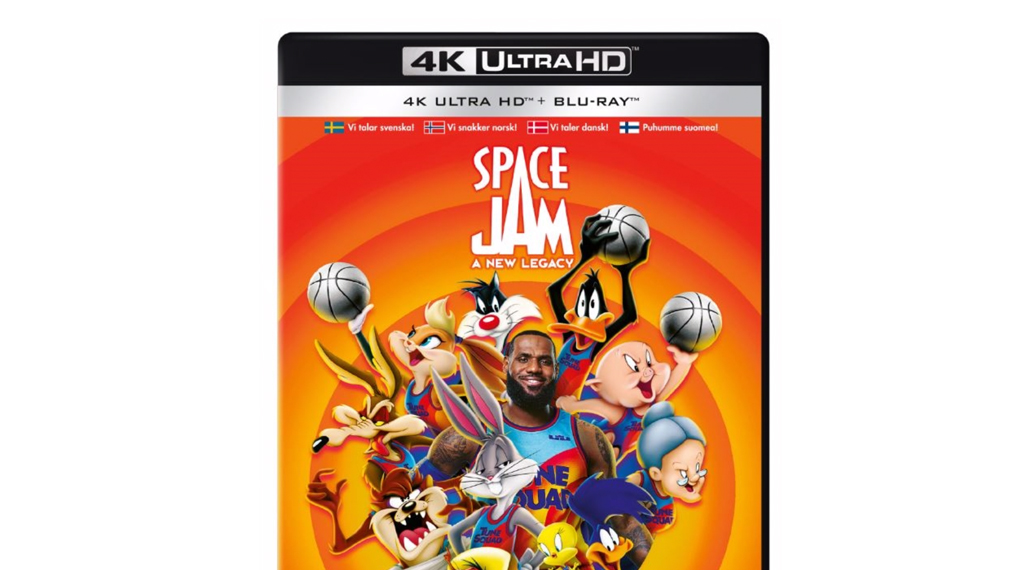TL;DR
LeBron James gets digitally sucked into Warner Bros.' computer by Al G. Rythm and has to lead the Looney Tunes in a basketball game to save his son. While the 4K transfer looks great and the sound is decent, this soft reboot of the original *Space Jam* is a bloated, structurally flawed mess. LeBron's acting is weak, the plot meanders before the Looney Tunes show up, and it feels more like a lecture on fatherhood than fun. Plus, the inclusion of genuinely creepy characters like Pennywise in a kids' movie is just bizarre. Despite some strong technicals, this sequel misses the basket by a mile. Want to know if it's worth the watch despite its many flaws? Read our full review.
Basketball player LeBron James (portrayed by LeBron James) and his son Dom (Cedric Joe) are digitally transported into Warner Bros.‘ supercomputer, which is controlled by Al G. Rythm (Don Cheadle). Al G. Rythm compels LeBron James to participate in a high-stakes basketball game, leading James to enlist the aid of Bugs Bunny and the Looney Tunes crew to secure victory. The consequences of this match soon prove to be more significant than initially anticipated.
The original Space Jam debuted nearly 25 years ago. In the 1996 film, basketball icon Michael Jordan starred. This second installment references its predecessor in numerous ways, functioning less as a direct sequel and more as a soft reboot. While Jordan’s acting prowess may have been limited, the filmmakers provided him with a manageable scope. The first film, while not a cinematic masterpiece, boasts several enjoyable sequences and features Bill Murray, an element that invariably enhances any production. Furthermore, the original Space Jam possesses a crucial advantage over Space Jam: A New Legacy: its brevity. Space Jam runs for a concise 88 minutes, while Space Jam: A New Legacy extends to an arduous 115 minutes.
Space Jam: A New Legacy suffers from a structurally flawed narrative. An excessive amount of time elapses before Bugs Bunny and the Looney Tunes are even introduced. The remaining runtime is largely devoted to depicting LeBron James as a negligent father. This presents a further issue: the narrative demands considerable acting from LeBron James, a task that proves beyond his capabilities, resulting in a diminished impact. Moreover, the film appears to presuppose an existing affinity for LeBron James, as if audience familiarity is a given. While viewers may have a connection through his athletic career, those without such prior engagement may find it difficult to empathize with his character’s struggles.
Don Cheadle, typically a compelling and engaging performer, appears noticeably uncomfortable throughout the film, possibly realizing the nature of the project he had undertaken. The supporting actors surrounding LeBron James deliver adequate performances, and the casting of actors, rather than his actual family, is a welcome choice.
A perhaps minor, yet noticeable, issue is the lack of synchronization between the characters observing the basketball game and the on-screen action. Their reactions resemble those of spectators in Rockband, exhibiting unwavering enthusiasm regardless of the performance. Ironically, behind-the-scenes footage reveals the presence of extras during filming, making the absence of appropriate direction perplexing. More concerning is the inclusion of characters like the Droogs from Clockwork Orange and Pennywise from IT in the audience of a children’s film. While the intention might be to provide amusement for accompanying adults, their menacing appearances are likely to frighten younger viewers. Furthermore, the casting choices for other established characters are questionable; the depiction of the 1960s Batman, famously portrayed by Adam West, bears a resemblance more akin to an unsavory figure than the Caped Crusader. Similar mischaracterizations plague other roles, highlighting a perplexing directorial and filmmaking decision.
The UHD 4K edition presents a satisfactory visual experience, offering sharp image quality and HDR10 support. The integration of animated and live-action elements is well-executed, and the color palette is exceptionally balanced. The Dolby Atmos sound design is robust, delivering a nuanced mix between quieter scenes and moments of intense action. The included extras offer some interest, though the documentaries are relatively brief.
In conclusion, Space Jam: A New Legacy unfortunately falls short of its potential for entertainment and enjoyment. Many directorial choices appear misguided, suggesting a lack of clarity in the film’s overall vision. While the UHD edition offers commendable technical merits, the film’s inherent shortcomings significantly detract from its overall quality.
